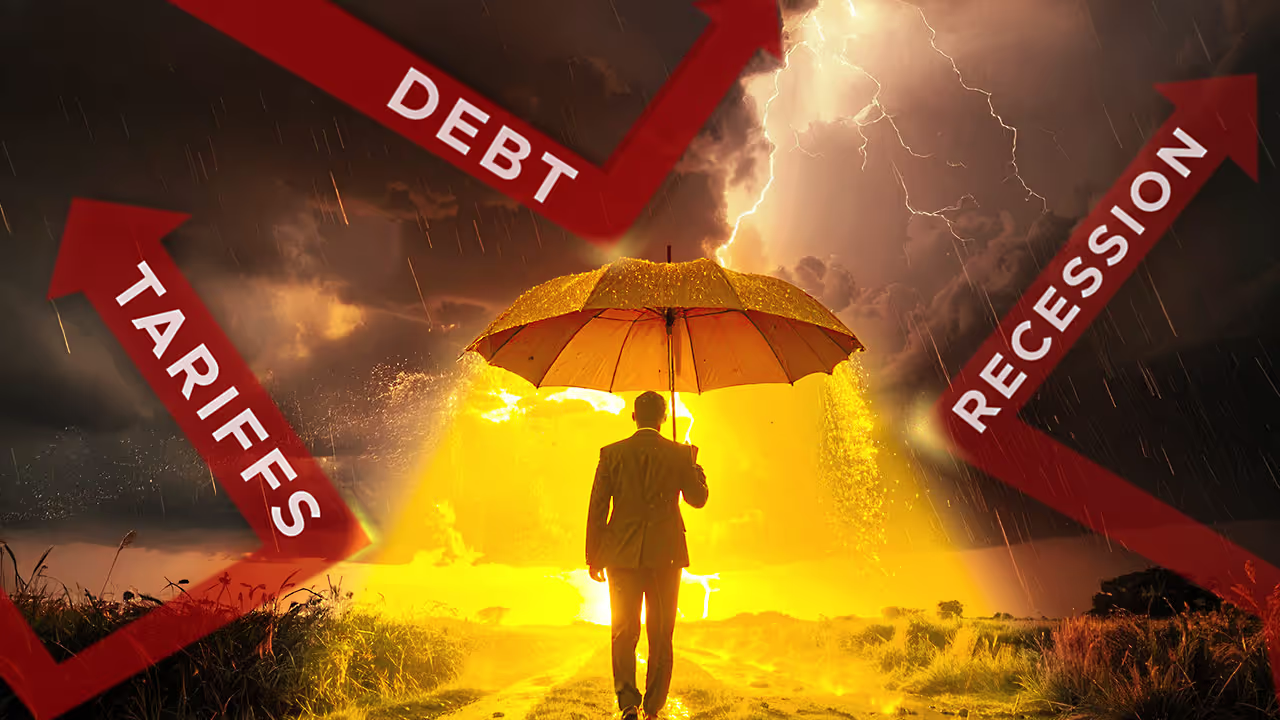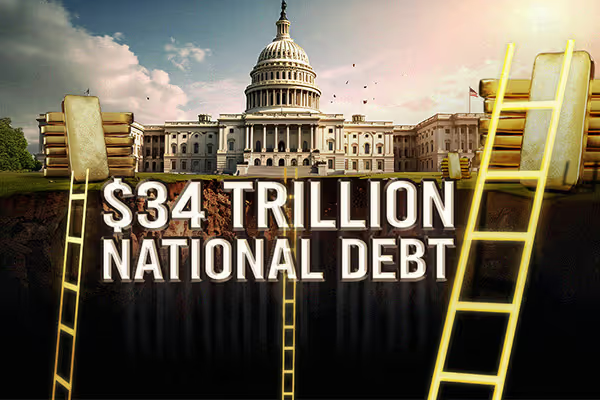As the July 9 deadline to secure new trade deals approaches, the Trump administration is signaling a return to sweeping tariff increases that could begin taking effect August 1. With over a hundred letters expected to be sent to countries lacking finalized agreements, the market is bracing for renewed economic strain, and many investors are once again turning to gold as a hedge against uncertainty.
While the stock market has taken investors on a bumpy and unpredictable roller coaster ride over the last year, gold has steadily risen nearly 25% since January 1. This sustained climb reflects growing demand for dependable, tangible assets as global instability grows.
President Donald Trump and his top economic advisors confirmed that the United States plans to notify dozens of countries that steep tariffs will resume next month unless trade negotiations accelerate. The original tariffs, first announced on April 2 during Trump’s “Liberation Day” speech, imposed sharply elevated rates on imported goods — including 145% on some Chinese products and double-digit hikes on steel, aluminum, and auto parts.
While those rates were paused just days later to allow a 90-day negotiation window, that window is set to close on July 9. Treasury Secretary Scott Bessent confirmed on CNN’s “State of the Union” that if countries haven’t made sufficient progress, the administration will move forward with reimposing tariffs. “President Trump’s going to be sending letters... saying that if you don’t move things along, then on August 1, you will boomerang back to your April 2 tariff level,” Bessent said.
In a series of posts on social media, Trump warned that any nation aligning with the BRICS alliance — a bloc that now includes Brazil, Russia, India, China, South Africa, Iran, and others — would face an additional 10% tariff, with “no exceptions.” The president added that letters would begin going out at noon on July 7, saying, “They’ll range in value from maybe 60% or 70% tariffs to 10% and 20% tariffs.”
While the administration has touted recent deals with Vietnam, China, and the U.K., uncertainty remains around the European Union, India, and other significant economies. Experts say the clock is ticking. “It can take a lot more time [than 90 days] to truly iron these things out,” Clark Packard, a trade policy expert at the Cato Institute, told CBS. Still, the administration appears committed to its August 1 timeline.
This renewed pressure on trade negotiations has added to global market anxiety. Stock futures slipped following Trump’s remarks on July 4, and analysts warn that another trade war could slow economic growth and reignite inflation concerns. Although the broader market has shown resilience in recent weeks, the threat of sudden tariff hikes is causing severe uneasiness.
That’s where gold comes in. Traditionally viewed as a sleep-at-night asset, gold tends to gain traction during times of geopolitical and economic uncertainty. While prices have held steady in recent sessions, any escalation in the trade dispute could quickly drive demand upward.
“The apprehension about the fiscal situation in the U.S. (after Trump's sweeping tax-cut bill passed Congress) and the lingering uncertainty over the approaching July 9 deadline for the tariff issue has boosted safe-haven demand,” Ricardo Evangelista, senior analyst at brokerage firm ActivTrades, told Reuters.
At Reagan Gold Group, we help clients navigate these volatile times by offering IRS-approved physical gold and silver IRAs, as well as safe and easy 401k rollovers. With renewed tariff threats, international tensions, and a possible debt ceiling showdown on the horizon, protecting your savings has never been more important.















